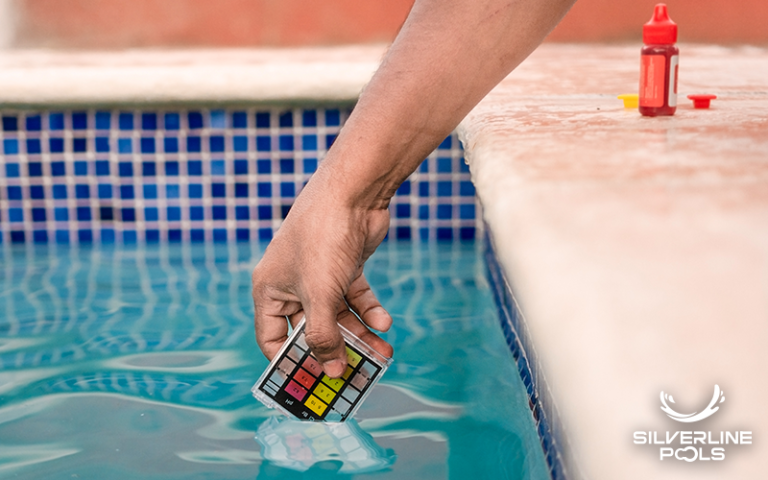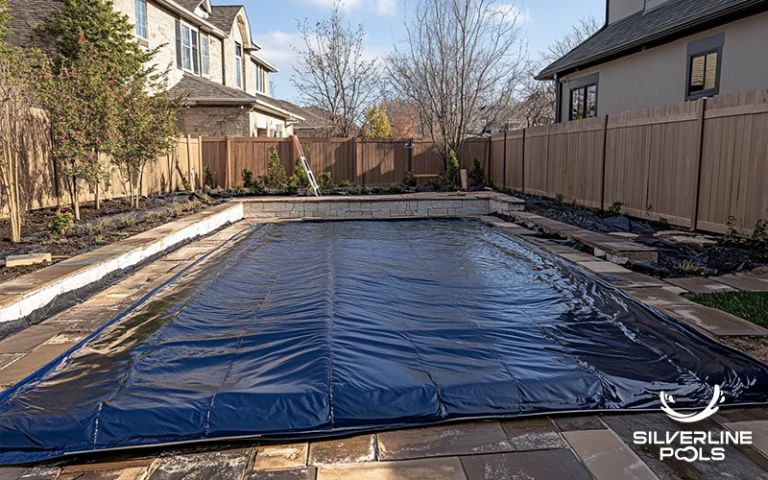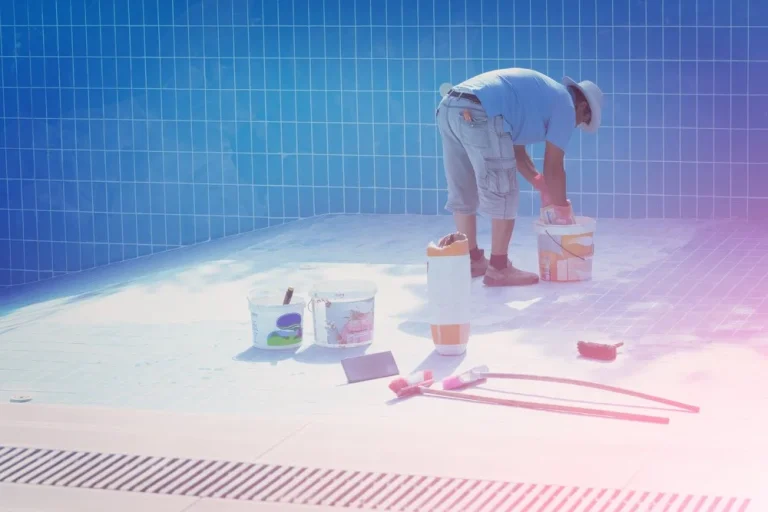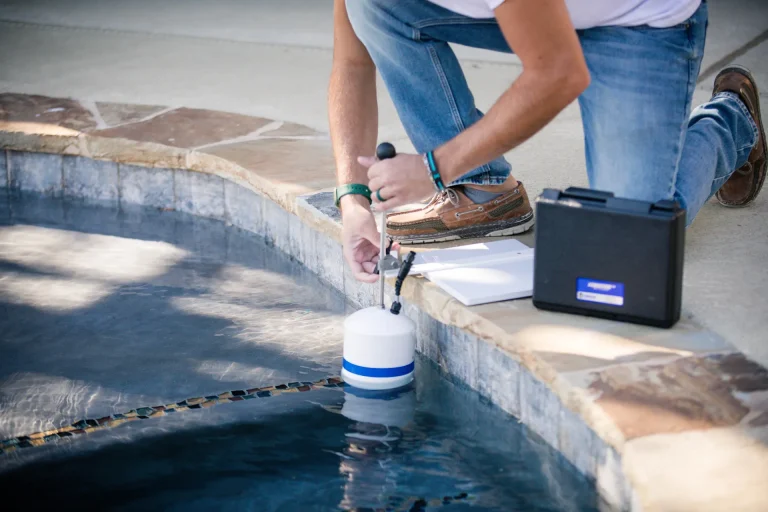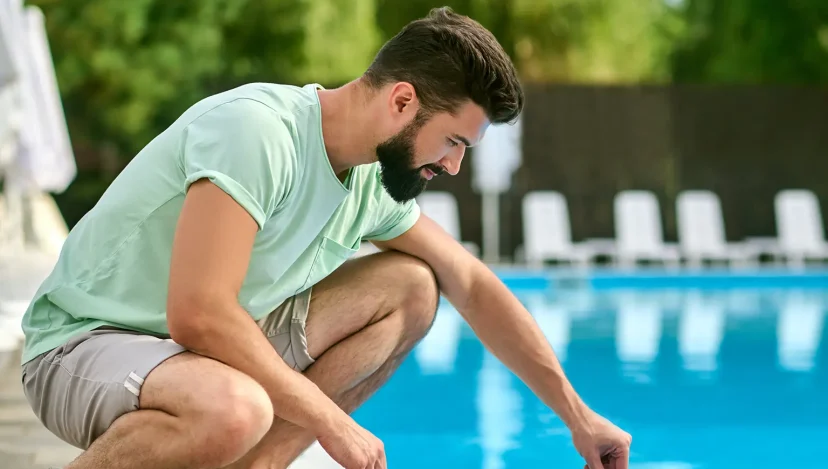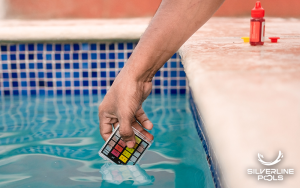Is your pool looking cloudy, green, or unfit for a splash? Or are your chlorine treatments useless? Whatever the case is, pool shock treatment is the ultimate answer! A pool shock treatment is adding chlorinated or non-chlorinated chemicals to raise the free chlorine levels in the pool water. Shocking a pool not only kills bacteria but also gives you a pristine pool with prolonged equipment life.
This easy guide takes you through everything you need to know about pool shock. From pool shock treatment steps to providing safety tips, we have covered everything for you.
Let’s take an informative and exciting trip through this blog!
When do you need a pool shock?
Most pool owners wonder when to shock their pools. Here are the surefire signs or reasons that your pool needs an immediate shock:
- Green pool water or other signs of algae growth
- Cloudy, foamy, or murky pool water
- High levels of combined chlorine (strong chlorine odor)
- Pool opening for the swimming season
- After heavy rainfall or exposure to hot temperature
- After heavy or frequent usage
Materials Needed for Pool Shock Treatment
You will need the following materials for shocking your pool.
Pool shock: This is the main cleaning agent. It comes in granular or liquid form.
Bucket: To mix the granular shock if needed.
Gloves: To protect your hands from the chemicals.
Safety goggles: To protect your eyes.
Pool test kit: To check the water chemistry before and after shocking.
What are the safety precautions for shocking a pool?
Here are some necessary guidelines to ensure safe and effective swimming pool shock treatments.
- Don’t add shock chemicals through the pool skimmer for safety, especially when using an automatic chlorinator.
- Use protective goggles and chemical-resistant gloves.
- Do not directly breathe into the chemical container.
- Never, ever mix different types of shock chemicals.
- Empty out the chemical container before moving on to the next one.
- Do not shock your pool during windy weather.
- Do not let your kids or pets near the pool when the shocking process is underway.
What are the steps to shock a pool?
Here are the basic steps to follow to shock the pool:
1. Test the Pool Water
Before starting the pool shocking process, you must test your pool’s chemicals. Check your pool water’s free chlorine, combined chlorine, and pH. This will help determine the amount of shock required for the water. For effective shock results, maintain the pH levels between 7.2 and 7.4.
2. Brushing and Vacuuming Your Pool
Brushing and vacuuming your pool’s floor and walls will remove debris and large contaminants, such as leaves and dirt.
3. Calculate the Required Amount of Pool Shock
Read the information about your shock product and chemicals. However, one lb. of pool shock is used per 10,000 gallons of water. Always refer to the product instructions for the recommended dosage.
4. Prepare the Shock
After choosing the required amount of pool shock, the next step is to prepare the shock. The ideal way to do this is to mix the shock in a large bucket. We recommend reading the instructions carefully, which comes with the shock.
5. Add Pool Shock To Water
Once everything is set, pour your shock into the pool water. Run your pool filter and pump at maximum speed for efficient mixing. The best way is to keep the system running for at least 8 to 12 hours. Moreover, move around the pool while pouring the shock chemicals for a thorough distribution.
What are the benefits of shocking the swimming pool?
Here are some benefits of shocking your pool:
- Pool shock sanitizes the pool by killing bacteria, algae, and viruses.
- Clears up foamy and cloudy water
- Maintains proper water pH
- Prolongs pool equipment life
What are the different types of pool shock?
Following are the different types of shocking a pool:
1. Calcium Hypochlorite
Calcium hypochlorite pool shock is the most popular type of pool shock. Due to its fastest and strongest action, Cal-Hypo pool shock kills diverse bacteria, including stubborn spores.
2. Lithium Hypochlorite
It is best suited for hard pool water. However, it is an expensive option.
3. Dichlor
This type of pool shock doesn’t require any pre-dissolution. It is highly stabilized and pool-surface-friendly.
4. Potassium Monopersulfate
It is a non-chlorinated pool shock for pool owners who prefer chlorine alternatives. It is effective against algae and also oxidizes water contaminants. Potassium monopersulfate pool shock is best for those with skin irritation issues.
Granules Vs Liquid Shock: Which one is the best?
Granular shock and liquid shock are both used to clean your pool water. Both types of shock are effective at cleaning your pool. The best choice for you depends on your personal preference and the specific needs of your pool.
Here are the key differences between granular chlorine and liquid chlorine shock treatment.
Granular Shock
- Comes in powder form.
- Often easier to store.
- May require dissolving before adding to the pool.
- Can increase calcium hardness and cyanuric acid levels.
Liquid Shock
- Comes in liquid form.
- Ready to use directly from the container.
- May be more difficult to store.
- Generally has a shorter shelf life.
Chlorine Vs Non-Chlorine Shock: Which one is the right choice?
Both chlorine and non-chlorine shocks can be used to sanitize a pool. Here are some key points to consider to make an educated choice between the two.
Chlorine Shock
- Uses chlorine to clean the pool.
- Is very strong and effective at killing germs.
- Can be harsh on your skin and eyes.
- May cause your pool water to smell like chlorine.
Non-Chlorine Shock
- It doesn’t use chlorine to clean the pool.
- Is gentler on your skin and eyes.
- Might not be as strong as chlorine shock.
- Can be used with chlorine or other sanitizers.
So, which one is better? It depends! If you want a super clean pool and don’t mind the strong chlorine smell, chlorine shock might be a good choice. If you have sensitive skin or prefer gentler water, non-chlorine shock could be better.
How often should you shock your pool?
Most pool owners wonder about how many times they should shock their pools. Shock your pool weekly for sparkling, clean, and healthy pool water, or at least in the alternative weeks. However, the frequency of pool shock depends on how often you use your pool.
Should you shock a saltwater pool?
Yes, you can shock a saltwater pool. Our experts recommend using a dicholor or non-chlorine shock for saltwater pools.
How long should you wait to swim after shocking a pool?
For non-chlorinated pool shock, you can have a splash quickly. However, you should wait at least 8 hours after shocking a pool for chlorinated pool shock.
Silverline Pools: Your Best Pool Shock Service Provider
Silverline Pools has serviced and treated hundreds of green water, post-storm, or post-winterization pools during our pool servicing journey. Together, we bring the joy of getting your pool to a sparkling, clean, and well-functioning condition.
Our team ensures we meet the highest pool cleaning and shock safety standards. Our top-rated cleaning, maintenance, and repair services hold the highest customer satisfaction in the local pool market. We clean your green pool and provide professional and modern solutions for pool cleaning through shock treatments.
Key Takeaways
Swimming pools may become unfit for swimming due to the accumulation of algae, dirt, and other contaminants. While regular chlorine treatments can clean up your pool, stubborn algae spores, intensive heatwaves, and windy seasons require shock treatment.
The critical steps of pool shock include brushing and vacuuming the pool, balancing pool chemicals, and adding pre-dissolved chemicals to the pool water. The safety guidelines for shock chemicals must be followed. If you are looking for a professional to assist you with shocking the pool, contact Silverline Pools and bring your dream pool back to its gleaming and swimming condition.
Frequently Asked Questions
How long does it take for shock to clear a pool?
Shock chemicals take about 12 to 24 hours to make your pool sparkling clean.
What happens if you go into a pool that was just shocked?
Going into a pool that was just shocking is hazardous for your health. It may cause breathing, digestive, skin, and eye problems. Our experts firmly insist on ensuring your safety and health during and after shocking the pool.
Are chlorine and shock the same thing?
Pool shock and chlorine are not the same things. Shock offers stronger sanitization than traditional chlorine.
Is liquid chlorine better than shock?
Both liquid chlorine and shock are used for pool sanitization. Chlorine offers mild sanitization strength as compared to shock. Moreover, liquid chlorine is wallet-friendly and un-stabilized.


